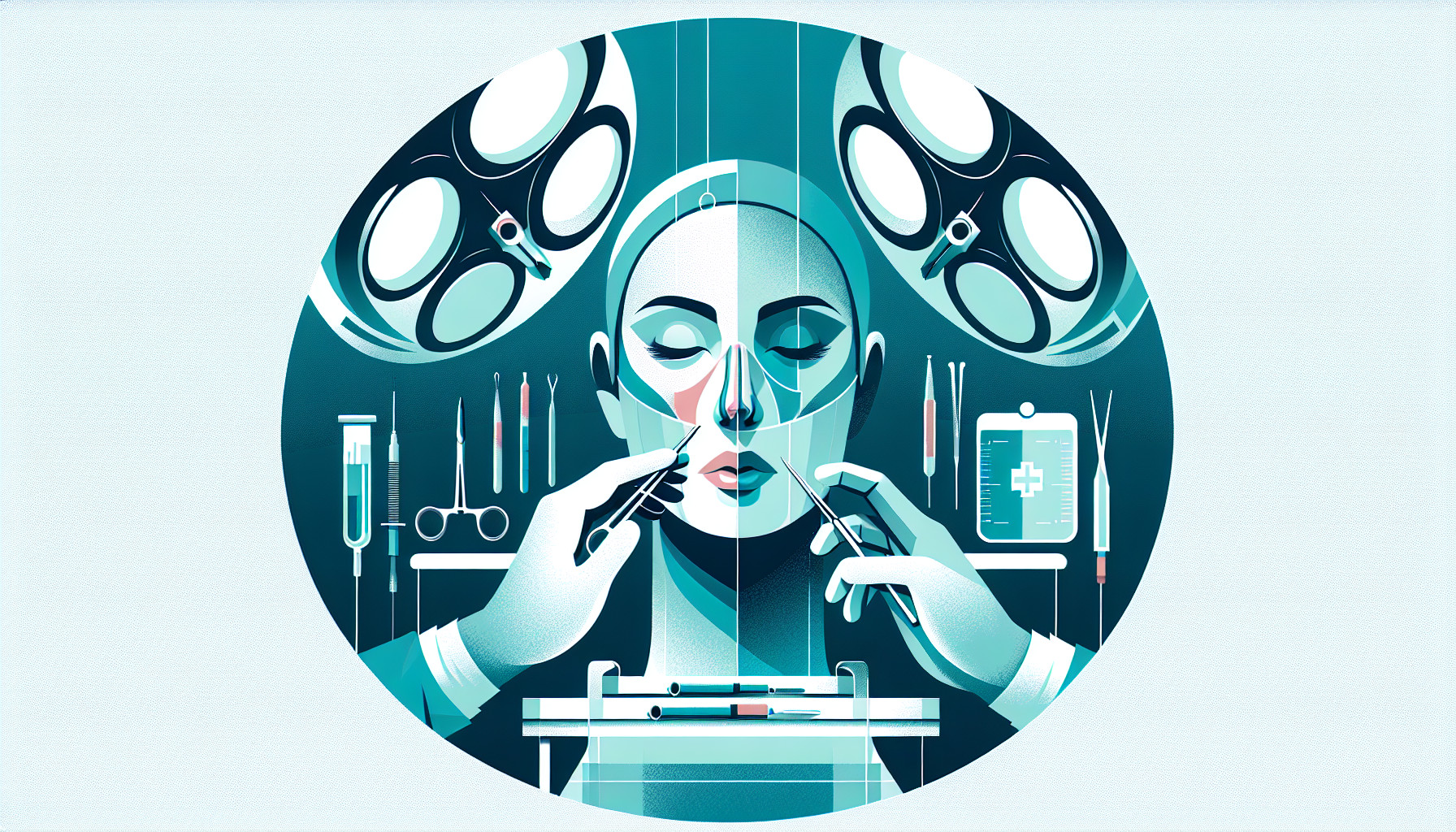Our Summary
This research paper discusses preservation rhinoplasty (PR), a type of nose surgery. The researchers looked back at 162 nose surgeries that took place between May and November 2020 to find out whether an open or closed approach to PR was more beneficial. An open approach means the surgery is done by making a cut in the strip of skin separating the nostrils, whereas a closed approach is done with all incisions inside the nose.
The researchers found that whether an open or closed approach is best depends on the specific needs and characteristics of the patient’s nose. For example, the closed approach was better for patients with thin skin, less complex nose tip problems, and noses that stick out too much. Meanwhile, the open approach was better for patients who needed a lot of changes to the bridge of their nose, had S-shaped nasal bones, complex nose tip issues, and needed their nose tip enhanced.
The closed approach was always used when preserving the top soft tissue of the nose. Meanwhile, structural nose surgeries, which involve using a special tool to cut and shape the bone and cartilage of the nose, were always done with an open approach.
Four of the surgeries had to be revised.
In conclusion, both open and closed approaches to preservation rhinoplasty have their uses and it very much depends on the specific needs of the patient’s nose.
FAQs
- What is preservation rhinoplasty and how does it differ between an open or closed approach?
- What patient characteristics and needs make a closed approach to preservation rhinoplasty more beneficial?
- What types of nose problems or surgeries are more suited for an open approach in preservation rhinoplasty?
Doctor’s Tip
A helpful tip a doctor might tell a patient about rhinoplasty is to carefully discuss and consider the specific needs and characteristics of their nose with their surgeon before deciding on the approach to take. It is important to understand the potential benefits and risks of both open and closed approaches in order to achieve the best possible outcome for the individual patient. Additionally, it is important to follow post-operative care instructions carefully to ensure proper healing and optimal results.
Suitable For
Patients who are typically recommended for rhinoplasty include those who are unhappy with the appearance of their nose, have breathing problems due to structural issues in the nose, or have suffered trauma to the nose that has affected its shape or function. Additionally, patients who have congenital abnormalities or deformities in the nose may also benefit from rhinoplasty surgery.
It is important for patients considering rhinoplasty to have realistic expectations and to understand the potential risks and benefits of the procedure. It is also important for patients to have a consultation with a qualified and experienced plastic surgeon to discuss their goals and concerns and to determine whether rhinoplasty is the right choice for them.
Ultimately, the decision to undergo rhinoplasty should be made in consultation with a medical professional who can provide guidance and support throughout the process.
Timeline
Before rhinoplasty:
- Consultation with a plastic surgeon to discuss goals and expectations for the surgery.
- Pre-operative assessments and tests to ensure the patient is healthy enough for surgery.
- Discussion of surgical approach (open or closed) based on the patient’s nose shape and desired outcomes.
- Pre-operative instructions on what to do and not do before the surgery, such as avoiding certain medications and fasting.
After rhinoplasty:
- Recovery period, which may include swelling, bruising, and discomfort.
- Follow-up appointments with the surgeon to monitor healing progress and address any concerns.
- Gradual return to normal activities and exercise as recommended by the surgeon.
- Long-term results become more apparent as swelling subsides and the nose fully heals.
- Potential need for revision surgery if the desired outcome is not fully achieved or if complications arise.
What to Ask Your Doctor
Some questions a patient should ask their doctor about rhinoplasty include:
- What are the potential risks and complications associated with rhinoplasty surgery?
- What is the recovery process like and how long does it typically take?
- How long will the results of the surgery last?
- Can you show me before and after photos of previous rhinoplasty patients?
- What type of anesthesia will be used during the procedure?
- How much experience do you have performing rhinoplasty surgeries?
- Will I need any additional procedures or treatments after the surgery?
- What is the cost of the rhinoplasty procedure and does it include follow-up appointments?
- What should I do to prepare for the surgery and what can I expect on the day of the procedure?
- Are there any specific instructions or restrictions I need to follow during the recovery period?
Reference
Authors: Kosins AM. Journal: Aesthet Surg J. 2022 Aug 24;42(9):990-1008. doi: 10.1093/asj/sjac074. PMID: 35443047
